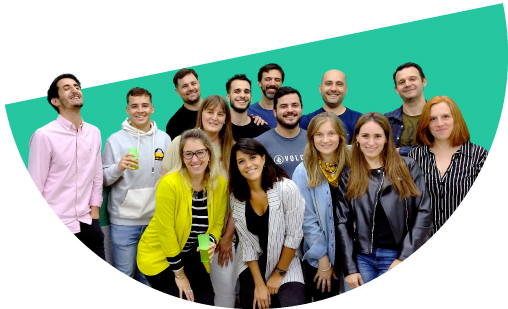Leverage world-class talent with our software teams in your organization.
Empower your organization with world-class talent with our software teams in your business.
CASE STUDY
SAB MILLER boosts efficiency with Giga IT! Dedicated team & automation analysis optimize bottling process. Increased production, lower costs, improved quality & safety.
What is Agile Dedicated Teams
We assemble interdisciplinary, agile and autonomous teams that interact directly and adapt to the work methods of our clients.
You can hire any of our solutions through this service model.
Benefits of Agile Dedicated Teams
Cost-Effective Solutions
Access skilled professionals without the overhead costs associated with full-time hiring, providing a cost-effective staffing solution.
Flexible Resource Scaling
Easily scale your team up or down based on project requirements without the long-term commitments or challenges of hiring full-time employees.
Quick Team Integration
Staff seamlessly integrates into your existing team, allowing for quick onboarding and collaboration.
Adaptability to Project Needs
Adjust team size and skill sets dynamically to adapt to changing project requirements, ensuring optimal resource utilization.
Quality Assurance
Dedicated agile teams often come with a focus on quality assurance, ensuring that the delivered product meets high-quality standards.
Same Time Zone
Overcome time zone differences, as teams in Latin America work within a similar time frame, enhancing real-time collaboration and reducing project timelines.
Why Giga

- Long term relationships.
- Ethical approach to business.
- Highly professional team with extensive expertise.
- Cultural fit.
- Wit thinking.
- Dynamic approach to driving positive change.
Frequently Asked Questions (FAQ)
How do I know if my business needs this type of service?
As a tech company we understand the importance of technology in today’s business world. We have a team of experienced professionals who can help you assess your needs and develop a customized solution that meets your specific goals. We are committed to helping you achieve your business objectives and take your company to the next level. The first step to start on this path is to schedule a call to discuss your project!
What kind of support do you offer?
We know that every project is unique and requires special attention. We work closely with our clients to define the specific needs of each project and tailor our support accordingly. We have a team of experienced professionals who are available at all times to provide assistance and ensure the success of your project.
What is the time zone coverage?
We have a team of over 300 professionals distributed across different countries in Latin America, including Mexico, Argentina, Brazil, and Colombia. This allows us to have access to different time zones and ensures that there is always a team available to provide the best possible service.
Related articles
Globalization and nearshore: a strategic alliance for startups to thrive internationally
Globalization and nearshore: a strategic alliance for startups has become a key focus for companies looking to amplify their international presence. Through this powerful combination, young...
Steering success: the role of a nearshore team leader in project management
If you’re managing a software development project across borders, the role of a nearshore team leader cannot be overstated. These professionals are at the forefront of ensuring that diverse teams...
Streamline Success: How to manage the performance of a nearshore team effectively
Managing a nearshore team requires more than traditional leadership; it calls for targeted strategies to bridge the physical and cultural gaps that can impact performance. This guide cuts straight...


